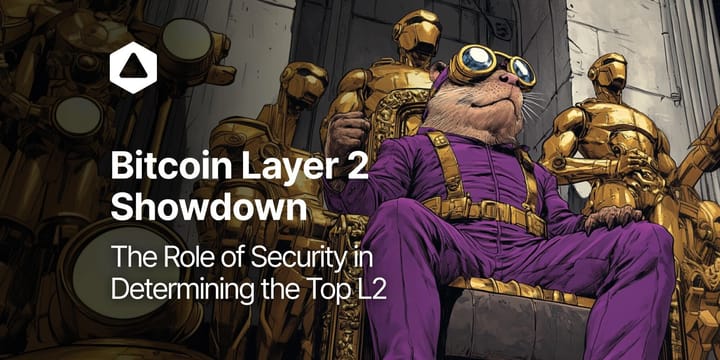Bitfinity and Pell Network: Exploring the Role of Restaking in Bitcoin’s functionality and Potential Applications.

Introduction: A New Era for Bitcoin with Bitfinity and Pell
Bitfinity is thrilled to announce our partnership with Pell Network, the first omnichain BTC Restaking Network. Together, we’re redefining what’s possible in the Bitcoin ecosystem.
At Bitfinity, our mission is to empower developers and BTC holders with high-performance solutions that unlock the full potential of Bitcoin. Pell Network shares this vision and has already achieved a major milestone: crossing $600M in Total Value Locked (TVL). This remarkable growth reflects Pell’s leadership in leveraging Bitcoin’s security for decentralized services.
In this post, we’ll walk you through:
- What restaking is and how it benefits you.
- How Pell Network uses restaking to support Decentralized Validated Services (DVS).
- Why this collaboration is a game-changer for Bitcoin Finance (BTCFi).
Ready to dive in? Let’s explore the future of Bitcoin together!
What is Restaking?
Imagine your Bitcoin isn’t just sitting idle or staked with one protocol—it’s working double-time. That’s the magic of restaking.
Restaking allows BTC holders to take assets already staked (like Liquid Staking Tokens, or LSTs) and “restake” them to secure additional decentralized services. This not only enhances network security but also opens up new earning opportunities for stakers.
Why Restake?
For stakers:
- More Rewards: Earn multiple layers of rewards with the same assets.
- Capital Efficiency: Maximize your BTC’s potential without adding more capital.
- Bigger Impact: Help secure a wider range of decentralized applications (dApps).
For developers:
- Lower Costs: No need to build separate validator networks.
- Simplified Security: Quickly bootstrap cryptoeconomic trust for your app.
How Does It Work?
Think of restaking as “plugging in” your staked BTC to power different decentralized services. These services could be anything from oracles providing real-world data to blockchain bridges enabling cross-chain transactions.
Meet Pell Network: The Restaking Powerhouse
Pell Network is taking Bitcoin’s security to the next level by enabling restaking for decentralized services. It’s like giving Bitcoin an upgraded toolkit to secure not just one, but many blockchain applications.
With over $600M in TVL, Pell has proven its ability to scale and deliver value to the Bitcoin ecosystem.
Here’s what Pell brings to the table:
- Decentralized Validated Services (DVS): A framework to secure oracles, bridges, and more with restaked BTC.
- Custom Slashing Conditions: Tailored security mechanisms to meet the unique needs of different services.
- Cross-Chain Interoperability: Seamlessly connect services across multiple blockchains.
Now, let’s dive deeper into Pell’s secret sauce: DVS.
Decentralized Validated Services (DVS): Securing the Future
What Are DVS?
DVS are decentralized protocols that require high security to function—think oracles that feed smart contracts with data or bridges that connect blockchains.
With Pell Network, these services are secured using restaked BTC, reducing the need for costly validator networks and enhancing scalability.
How Does DVS Work with Pell?
Let’s break it down:
- BTC holders restake their assets using Pell.
- Restaked BTC is used to secure DVS like oracles, bridges, or transaction sequencing services.
- Validators earn rewards for securing these services, while stakers enjoy additional yield.
Real-World Examples of DVS
1. Decentralized Oracles
Need reliable data for your smart contract? DVS-powered oracles securely relay real-world information (e.g., prices or weather) using restaked BTC for cryptoeconomic trust.
2. Blockchain Bridges
Want to transfer assets between blockchains? Restaking ensures bridges are secure, fast, and cost-efficient.
3. Data Availability Services
Concerned about storing blockchain data? Restaking powers decentralized storage solutions, keeping your data safe and accessible.
How Pell Network and Bitfinity Work Together
With Bitfinity’s high-speed Layer 2 infrastructure and Pell’s innovative restaking model, this partnership supercharges the Bitcoin ecosystem.
Bitfinity Brings:
- Blazing-fast transaction speeds (>1,000 TPS).
- Developer-friendly tools for building Bitcoin-based applications.
- Chain-Key Cryptography for secure cross-chain operations.
Pell Brings:
- A shared trust network powered by restaked BTC.
- Modular architecture to support a variety of decentralized services.
- Cross-chain interoperability for seamless integration.
Together, we’re creating a foundation where Bitcoin is not just a store of value—it’s the backbone of decentralized services.
What’s Next?
This is just the beginning. Bitfinity and Pell Network are committed to:
- Expanding the use cases for restaking.
- Lowering entry barriers for developers.
- Driving innovation in Bitcoin Finance (BTCFi).
Whether you’re a staker, developer, or blockchain enthusiast, this collaboration is a giant leap toward unlocking Bitcoin’s full potential.
About Pell:
The First & Omnichain BTC Restaking Network, extending BTCFi into the cryptoeconomic security domain and fully unlocking Bitcoin’s potential.Learn more about Pell Network: https://pell.network/Pell Twitter:https://x.com/Pell_Network

Connect with Bitfinity Network
Bitfinity Wallet | Bitfinity Network | Twitter | Telegram | Discord | Github

*Important Disclaimer: The information provided on this website is for general informational purposes only and should not be considered financial or investment advice. While we strive for accuracy, Bitfinity makes no representations or warranties regarding the completeness, accuracy, or reliability of the content and is not responsible for any errors or omissions, or for any outcomes resulting from the use of this information. The content may include opinions and forward-looking statements that involve risks and uncertainties, and any reliance on this information is at your own risk.
External links are provided for convenience, and we recommend verifying information before taking any action. Bitfinity is not liable for any direct or indirect losses or damages arising from the use of this information.





Comments ()